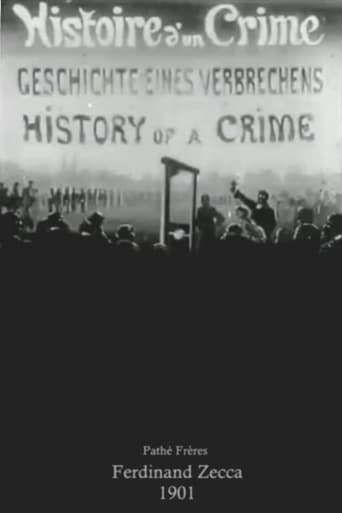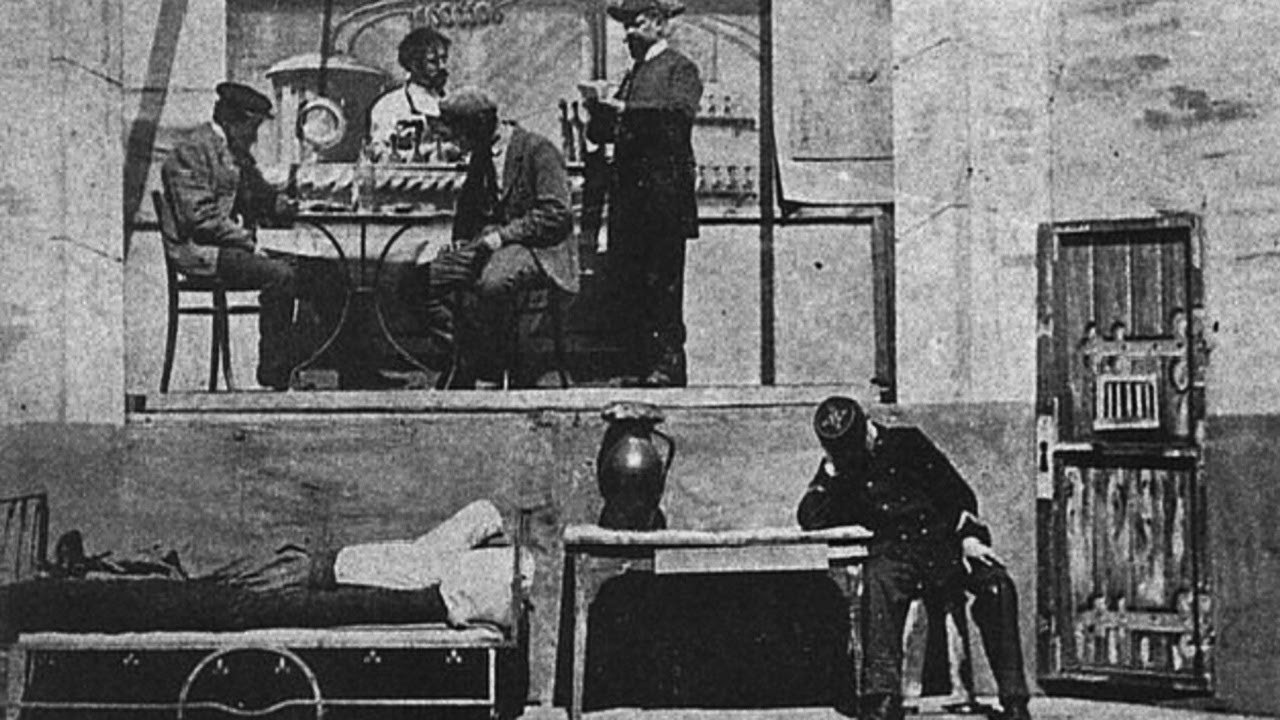He_who_lurks
This film was French directer Ferdinand Zecca's first true masterpiece. It is a very impressive film for 1901 for several reasons. First of all, it was made before Méliès's "A Trip to the Moon" which is considered one of the most important early films because of its length and story-telling. However, "History of a Crime" is proof that before Méliès's film other filmmakers were also trying to make films with a plot. While the plot here is simple, it is told in seven different scenes and there is some gore and violence too!The story here is about a man murdering a guy and robbing his safe. He's caught though and condemned to death. The highlight in the whole film is the jail cell scene because here we actually get some background about the robber's past. The ending where the man's head is chopped off via guillotine has some interest. Supposedly, I've read that they'd stop playing the film and let all the women and children out of the theater before the guy's head came off!Extremely ground-breaking for 1901. Anyone interested in the history of movies should see it.
bob the moo
A man is arrested for a crime and, while he awaits his judgement in his prison cell, he recalls how he came to this point. Comparatively ambitious this little film from Pathé in France in terms of narrative as it takes several scenes to tell the story and also has a flashback sequence where we get an element of back story. At the time most stories were a lot simpler than this so praise to it for that. It is very much a morality tale with no real complexity or debate but to moan about this would be splitting hairs.Technically you can see the makers playing with the media trying out some things. Most notably is the dream sequence. It does look clunky inset in part of the screen but it is clever and ambitious at this point even if it isn't totally successful. They also try out the dissolve to join scenes a device that they don't use very well and understandably gave up on after this because it is a bit messy. The use of a backdrop instead of depth sees them forget the shadows as well but this was formative times and it is interesting to see these things in play.
MartinHafer
This film is highly reminiscent of the Edison film "Execution of Czolgosz"--a recreation of the execution of the man that murdered President McKinley. The Czolgosz execution was re-staged and many people believed it was the real thing, though today's audiences would easily be able to figure out it was faked. This is much like this French film from the exact same year. In fact, it was not uncommon for companies to "borrow" ideas from other ones and I'm not sure which of the studios (Edison or Pathe) really made their film first.The first portion of the movie is a relatively dull story about a guy who murders another, is apprehended and sent to prison. While there are real sets and plot (making it better than MOST films from 1901), the thing looks pretty cheesy. That is, until the very end. Then, to my utter surprise and initial horror, they do a pretty realistic guillotining of the prisoner and you see the head pop off!! If your kids want to see a very, very old film, show them this one--it's creepy but cool and guaranteed to make them laugh!
Snow Leopard
This is an ambitious effort for a movie made in 1901. Not only is the plot rather involved, taking several scenes to tell the whole story at a time when most narrative movies consisted of only a handful of developments at the most, but it also experiments with its techniques. Not all of it works, but despite some flaws, it's interesting, and it's relatively successful at what it set out to do.The story combines a morality play, of the kind that became very common over the following decade, with a couple of efforts to provide commentary and/or additional background on the events. None of that was entirely new, but it was rather enterprising to try to put so much together at once. The story itself is not so interesting as some of the ideas that they used in filming it.In terms of technique, the highlight is a dream sequence that fills in the audience on the background of the criminal who is the main character. The technical side now looks rather crude, but it was certainly a worthwhile effort, and at least the idea was good, as an attempt to add some depth to an otherwise straightforward story.Another experimental device is the use of dissolves each time the scene changes. There's no reason why it couldn't work, and this was not the only movie of the era to try it, but of course it did not catch on. Still, the combination of distinctive features gives this short movie some interest over and above the story content and the sometimes rudimentary techniques.


 AD
AD

